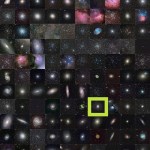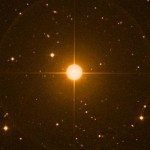nucleus
"The battle, sir, is not to the strong alone; it is to the vigilant, the active, the brave." -Patrick Henry
It's not a good idea to showcase a galaxy for you every Messier Monday, considering that even a crescent Moon can render most of them completely unobservable. Now that the autumnal equinox has passed, however, a very special spiral will be visible after sunset for the next six months or so in a relatively nondescript part of the night sky. Out of the 110 deep-sky objects that comprise the Messier catalogue, a full forty of them are galaxies, although today's object wasn't…
I love this story. It is a story of how ideas changed about the nature of the atom. These are the notes (and diagrams) I use when I teach the atomic nature of matter to non-science majors. The best thing about this story is that it is a great example of science. Science (or scientists) build a model. If new evidence comes along, the model gets changed. There are several other websites that describe all of this stuff, I will list a couple at the end of this post.
Typical textbook model of an atom
Look in an intro, non-science majors textbook and you will probably see a picture like this…
Ahh, stars. Giant furnaces of nuclear fusion. Doing the stuff our Sun does, burning hydrogen fuel into helium (among other things) and emitting lots of visible light and energy in the process.
But when we take a look at brown dwarfs, they aren't like normal (i.e., main sequence) stars like our Sun. Instead of burning hydrogen into helium for their fuel, brown dwarfs don't generate enough pressure to make that happen; they can only burn hydrogen into deuterium.
Let's go over what the differences here are. A hydrogen nucleus is just a proton, with a mass of 938.272 MeV/c2. (I use these units…

